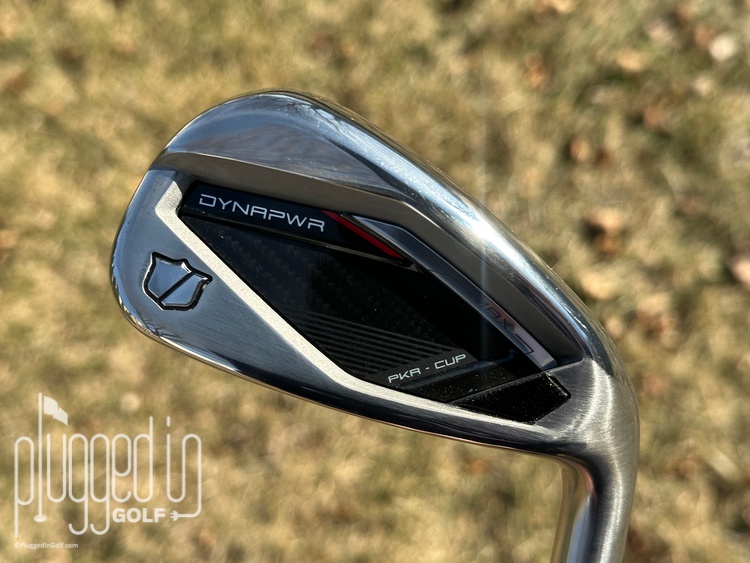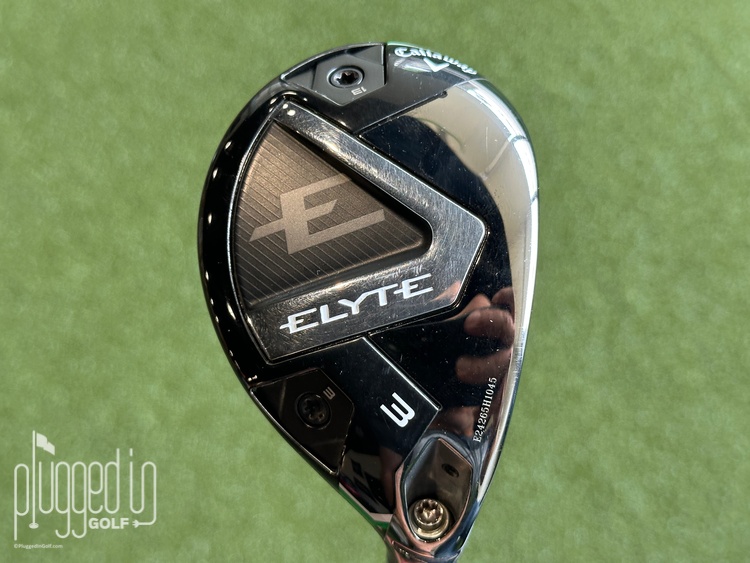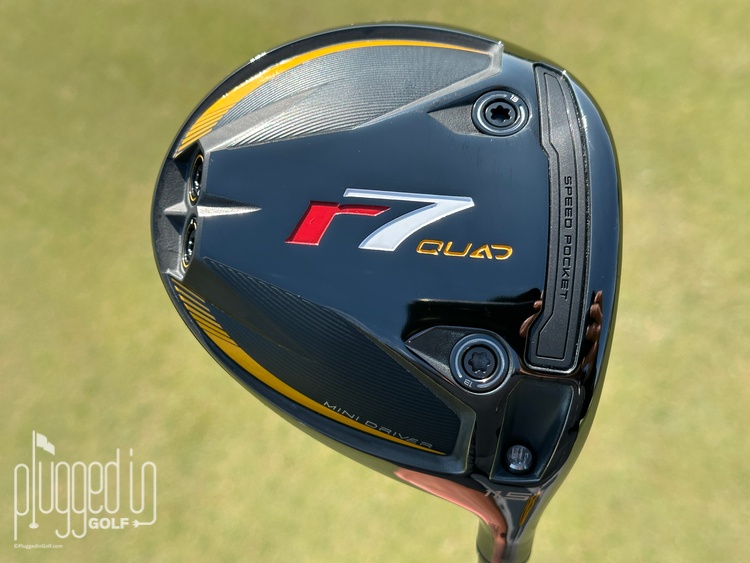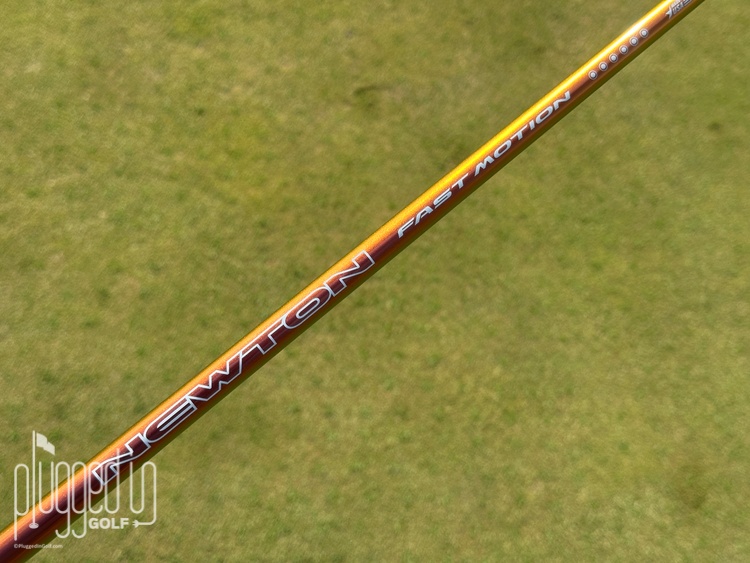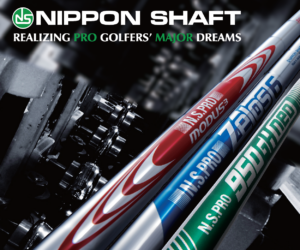50 Words or Less
The Wilson DYNAPWR Max irons are built to launch every shot high and straight. Ideal for players looking to pick up carry distance and land their shots softly on the green.
Introduction
The lofts of irons used to follow a predictable pattern. A company’s most traditional irons had the weakest lofts, and the super game improvement set had the strongest lofts. In the last couple seasons, we’ve seen several OEMs break that tendency, putting weaker lofts into their super game improvement sets to promote a higher ball flight. That’s the case with the Wilson DYNAPWR Max irons, a set built to blend speed, forgiveness, and elevated approach shots.

Looks
At a glance, you can easily mistake the Wilson DYNAPWR Max irons for the standard DYNAPWR [review HERE], but there are several notable differences. First, the finish on the DYNAPWR Max is a polished chrome; the DYNAPWR has a matte finish. The cavity of the DYNAPWR Max irons also has a carbon fiber look. The tech notes don’t mention the use of carbon fiber, so I think this is purely aesthetic, but it does look cool. Overall, these irons have a fairly busy look in the bag, but the limited color palette keeps them from appearing unserious.

At address, the Wilson DYNAPWR Max irons are clearly in the super game improvement category. They have thick top lines and a lot of offset. Additionally, they have a substantial heel-to-toe measurement, which should give higher handicap players more confidence over the ball. Wilson did keep the club’s flange out of view for most of the set – it was only visible in the 5I and 6I, for me.

Above, you can see the Wilson DYNAPWR irons 7I on the right and the DYNAPWR Max 7I on the left. There’s a substantial difference between the two, which I like – why have two models if they’re going to be near twins? The DYNAPWR Max is substantially thicker across the top line, and it’s longer from heel to toe. There is also more offset – 0.056″ in the 7I, to be precise. Kudos to Wilson for publishing the offset specs.

Sound & Feel
There is a familial similarity to the sound of the feel of the Wilson DYNAPWR Max irons and the DYNAPWR irons. Both irons are more traditional than you might expect based on the size and hollow body construction.
The impact sound of the DYNAPWR Max irons is below average in volume. It’s more “thud” than “snap,” which is unusual for an iron of those size. I think of this as Wilson nodding toward their long history of forged blades. The sound of these irons does get more crisp as you move into the longer clubs. Also, the DYNAPWR Max gets markedly louder on thin misses.
Turning to feel, these irons are solid. As I said about the standard DYNAPWR irons, these aren’t going to be confused with forged blades, but the feel does nothing to betray their hollow construction. The feedback through the hands is also better than you might expect from a large, stable iron.

Performance
Despite sharing almost all their tech features with the DYNAPWR irons – PKR-Cup Face, Velocity Optimization Channel, Open Heel Construction – the Wilson DYNAPWR Max irons are built for a different purpose. This set is designed to get the ball high in the air with maximum forgiveness, and they’re very good at that.

When I started hitting the DYNAPWR Max irons, the trajectory was the first thing I noticed. With the wedges and short irons, the ball launched to the moon. The mid and long irons (the set stops at 5I) the ball flew well above my normal trajectory. The spin was controlled – the ball was not ballooning – but it launched way up. If you want to see the ball fly higher to get more carry distance or stop faster on the greens, these irons are worth a look.

Two things work together to make the Wilson DYNAPWR Max irons such high fliers. The first is the loft structure. While not particularly weak or traditional, they are 1.5 to 2 degrees weaker than the standard DYNAPWR irons. The other piece of the puzzle of the low CG created by the wide sole. Because the CG is so low, even thin strikes are lifted to good trajectories. The wide sole also helps to prevent digging when you hit the ground before the ball.

In addition to flying high, the Wilson DYNAPWR Max irons want to fly straight. The big, stable head plows through impact without twisting, even when your strike is imperfect. If you want to hit little cuts and fades or flight the ball down, these irons will make you work for it. These are built to produce high, straight shots on repeat.

Turning to ball speed and distance, the DYNAPWR Max irons are consistent but not the fastest. This is a natural tradeoff with the slightly weaker lofts. These irons aren’t slow, but they’re not pushing the envelope for ball speed. That said, depending on your swing speed and ball flight, added height might lead to bigger distance gains than added ball speed.
Conclusion
The Wilson DYNAPWR Max irons belong in the bags of players who want more consistency and a higher ball flight. With a larger head and slightly weaker lofts, they take the stress off the approach shots by launching every ball high and straight.
Support Plugged In Golf, Shop HERE
Wilson DYNAPWR Max Irons Price & Specs
He founded Plugged In Golf in 2013 with the goal of helping all golfers play better and enjoy the game more.
Matt lives in the northwest suburbs of Chicago with his wife and two daughters.
- Callaway Elyte Hybrid Review - June 3, 2025
- TaylorMade R7 Quad Mini Driver Review - June 2, 2025
- Newton Fast Motion Shaft Review - May 30, 2025




